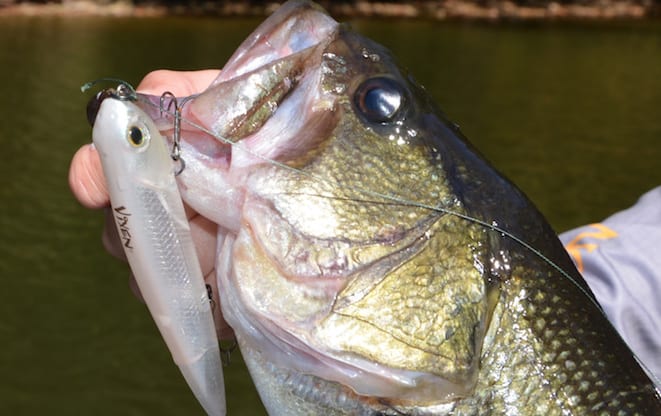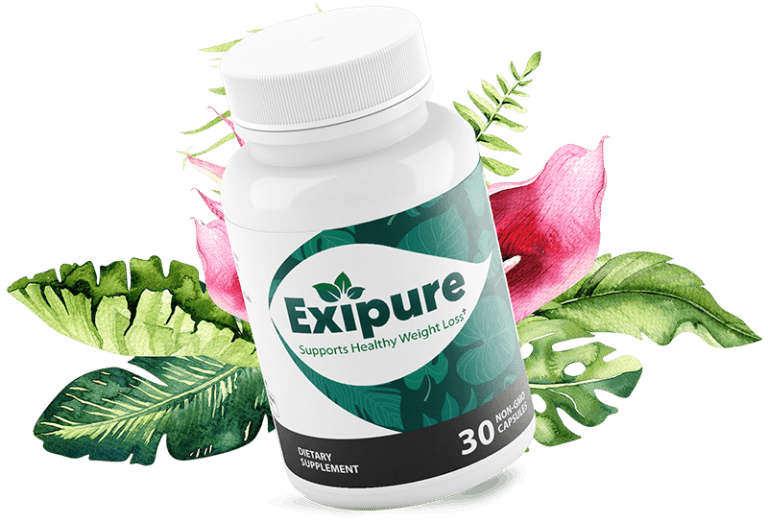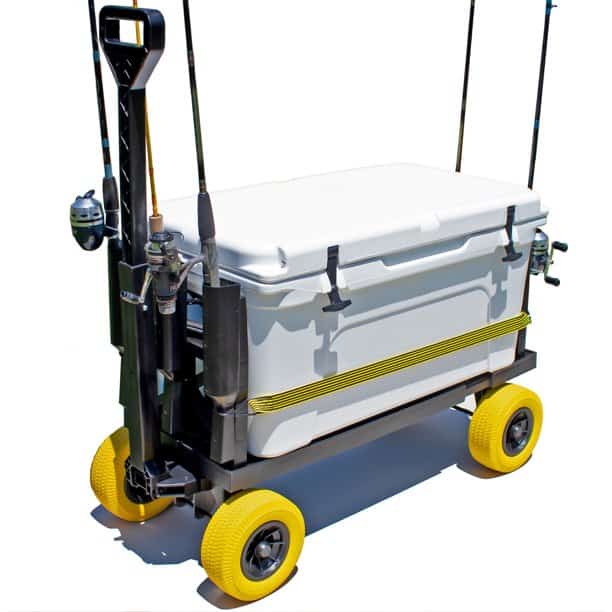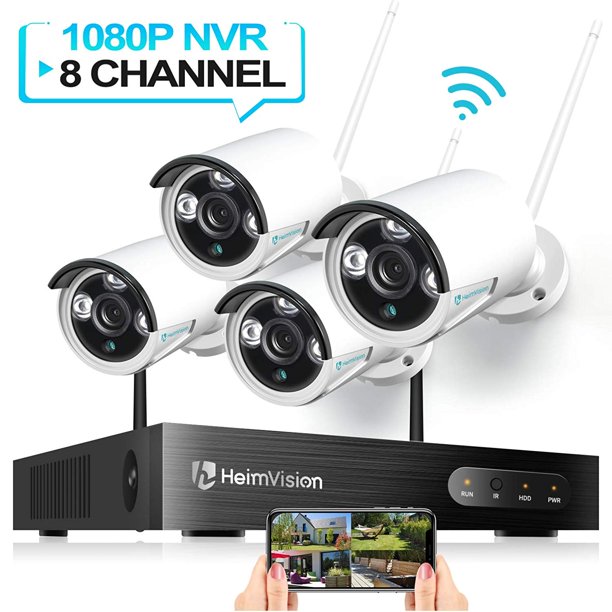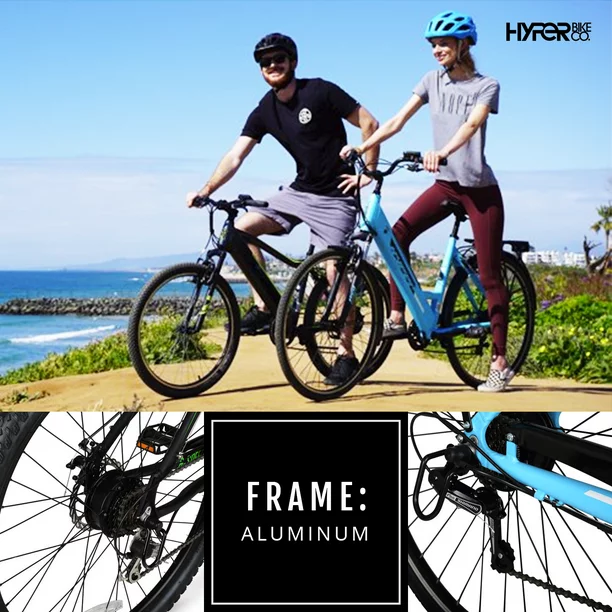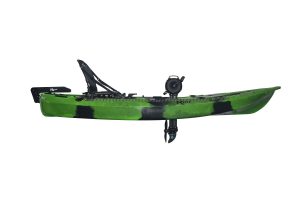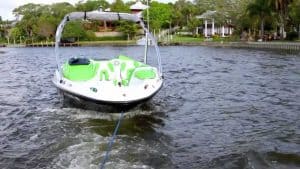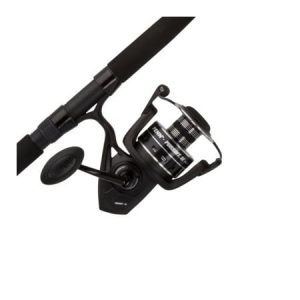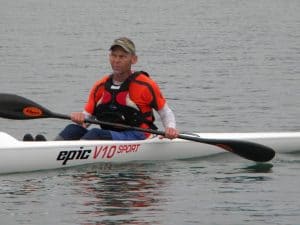Ronnie Garrison – May 28, 2019
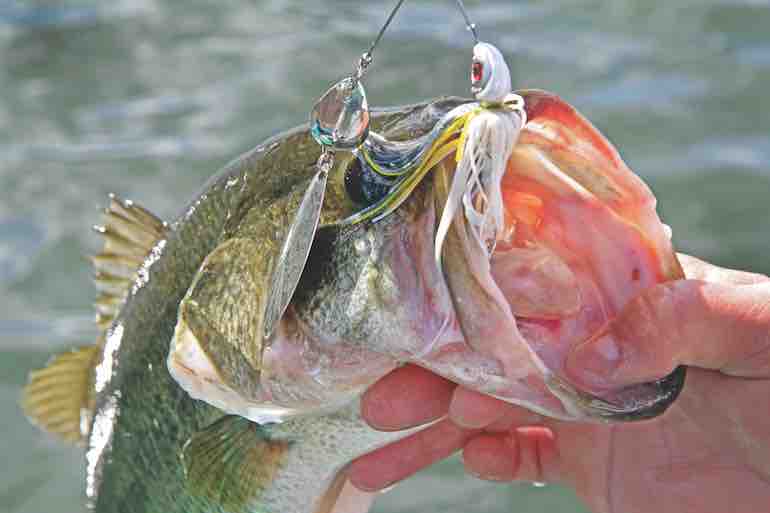
For your next bass trip, you’d better come with the right baits & tactics.
Bass fishing this time of year is wide open in many places across the country.
Bass are scattered and on many types of structure and cover as they leave spawning areas and head to deep summer holes. It can be confusing, but tying on one of the following four baits can cover all possibilities.
A topwater bait, spinnerbait, shaky head worm and jig and pig will allow you to fish all cover and structure where bass are holding and feeding. And used in combination, they catch fish at any depth you need to fish, depending on your choices in each.

TOPWATER
Many bass fishermen agree that the most exciting way to catch bass is on top. Right now, bass are feeding from the very back ends of creeks and coves to main-lake open water and may be anywhere in between. A good tactic for patterning fish early is to go to the back of a short feeder creek and work out to the main lake, fishing all the cover along the bank, letting the fish tell you where they are.
A popper like a Rico or Pop-R, or walking bait like the Sammy, will find fish. Cast either past cover and fish as close as possible to bushes, logs, blowdowns and rocks in the water. Try different speeds, from a fast-twitching action (making the popper gurgle) to walking bait so it jerks from side to side, to using slow twitches to give the bait gentle movements.
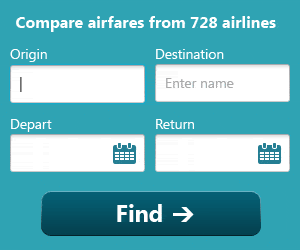
If the fish seem scattered, tie on a buzzbait to cover water fast. Make long casts and run it over and beside any cover you see. When a bass hits, note its location and the type of cover to find a pattern. Then concentrate on that cover and depth combination in other similar places.
Bass hold on cover on main lake points and humps, and ambush baitfish as they move past. Some of the fastest action is when feeding bass churn the surface. Long casts to them with either the walking bait or popper, fished fast, can catch multiple fish. And you can draw bass up from deep, clear water by fishing those baits over brushand standing timber.
Clear water means working your topwater faster because bass can see and chase the bait over a longer distance. Stained water should make you slow down, work your topwater longer over cover, and keep it in one area to give the fish time to locate and hit it.
A walking bait works better when the water is dead calm (or close to it). With more surface waves, a popper creates more disturbance and is easier for the fish to find. The more wind, the bigger your bait should be. If waves are a half foot high or more, though, it is tough to catch fish on topwater lures.
Bright colors — chrome or bone for your plugs, white skirts for buzzbaits — work well for most water color. But in very clear water also try natural, muted colors. In stained water black baits are hard to beat, in both plugs or buzzbaits. And try different sizes, from 1/4-ounce to 3/4-ounce, to match the size bait the fish are eating.
To read the rest of the article click the link below!
The post “4 Tactics for Maximum Bass” appeared first on GameandFishMag.
Conclusion
Hope this post was helpful to you and that you have a very successful trip fishing with your friends and family!
Check out the other sections of my blog for more tips on ThebookOnGoneFishing.
Helpful Links To Kayaks And More
1.Buyer Guide for Kayaks Paddles
I went shopping online at 4 different online stores to find the right paddle for my kayak.
The first store I went to was REI to get more infomation about buying the right paddle for my new kayak. There are a few thing to think about shift, blade, material and price, and last length. By choosing the right paddle you can save yourself a lot energy. Here is some information from REI:
Figuring out the right size (length) of paddle is surprisingly straightforward. The wider your boat is, the longer your paddle needs to be. Your height is also a factor, especially for a narrower boat: Taller paddlers need longer paddles.
To read the rest of the article: Buyer Guide for Kayaks Paddles
2.How to find a good kayak rental company?
I like traveling and trying new things. I have been to 20 different city this past month. I have enjoy good food, good weather, roof top bars, and the beach. I also have enjoy learning and listening to interesting people. There are different rental programs across the country at universities and colleges. I came a cross a program about the local University of North Florida (UNF), they offer “Gear Check-out & Adventure Trips.” The students can use the gear for free, for example, kayaks, canoing, and rock climbing.

The programs offered University of North Florida (UNF) allow students, staff and visitors to learn about team work in different environment. I like to see programs like that be very success like it is at our local university.
To read the rest of the article: How to find a good kayak rental company?
3.Kayak Buyers Guide
How to buy a kayak?
As I been writing this blog the past two weeks I have been shopping for a kayak. I went online to Dick’s sporting goods. I went to Walmart, Black Creek sporting goods store, and REI co-op.

Here is some information from each store, first Black Creek is more that you have to go into the store the online store does not have enough information to share online.
They do offer classes, rentals, certifications, and more….
To read the rest of the article Kayak Buyers Guide
Outdoor News
- MRD Hatchery Spawning Flounder for First Time
- Reward offered in stoning death of javelina at elementary school
- Idaho extends wolf hunting and trapping seasons
- New Hampshire Wildlife Control Operator Training Class
- DEC Seeks Volunteers to Join Striped Bass Cooperative Angler Programs
BoatMag.com News Latest Boats 2020
- 2020 MasterCraft NXT22
- 2019 Boat of the Year Trophy Presentation: Solace 345
- 2020 Centurion Vi22
- 2020 Centurion Vi24
- 2020 Sanger 231 SL
Best Fishing Practices
Many anglers plan ahead and incorporate best fishing practices using tips to ensure safe and responsible angling. Thank you to www.fishsmart.org or providing the following tips:.
Plan Ahead
Know your fishing regulations and have the necessary equipment ready to release fish that you do not plan to keep.
Avoidance
Develop fishing skills to target the size and species you desire. Change location, depth, or bait to avoid catching fish you do not intend to keep.
Appropriate Gear
Use appropriately sized gear that is targeted to the species you desire to catch. Use circle hooks when planning to release fish and where they are required.
Landing Fish
Do not play the fish to exhaustion. Use line strong enough to minimize playing time. Land the fish quickly and if possible, release them while still in the water.
Handling Fish
Use knotless, rubberized landing nets and rubberized gloves to avoid removing the slime layer from the fish’s body. Keep the fish horizontal and support the body. Avoid dropping the fish, especially onto hard surfaces. Use release tools, such as dehookers and recompression tools, to minimize handling. Release fish as soon as practical and do not keep them out of the water longer than necessary.
Newsletter
Additional Information: Fishing Maps that might be helpful for your next fishing trip.

Conclusion
Hope this post was helpful to you and that you have a very successful trip fishing with your friends and family! Check out the other sections of my blog for more tips on KayaksBoats.
Please visit our Sponsors:
